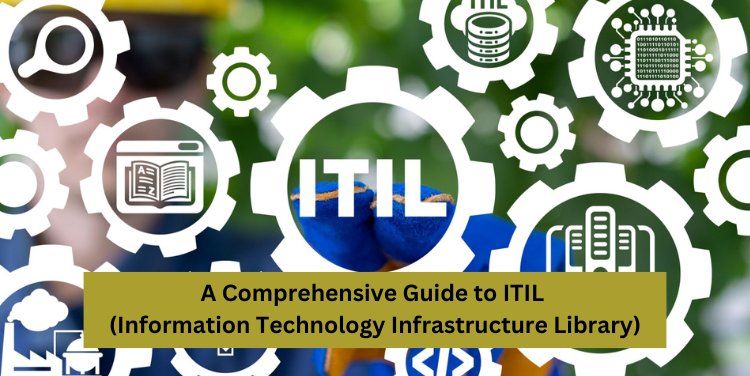A Comprehensive Guide to ITIL (Information Technology Infrastructure Library)

In the dynamic world of Information Technology (IT), efficient service management is critical to ensuring the seamless operation and delivery of IT services. This is where the Information Technology Infrastructure Library (ITIL) comes into play. ITIL is a set of best practices designed to optimize IT service management (ITSM). Let's delve into what ITIL is, its benefits, core components, and how organizations can implement it effectively.
What is ITIL?
ITIL is a framework that provides guidelines for IT service management. Developed in the 1980s by the Central Computer and Telecommunications Agency (CCTA) for the UK government, ITIL has evolved to become the de facto standard for IT service management across various industries globally. The framework aims to align IT services with the needs of the business, ensuring high-quality service delivery and continuous improvement.
Benefits of ITIL
Improved Service Delivery: ITIL helps organizations to provide reliable and consistent IT services by implementing standardized processes.
Enhanced Customer Satisfaction: By aligning IT services with business requirements, ITIL helps in meeting customer expectations more effectively.
Increased Efficiency: ITIL promotes a structured approach to service management, reducing redundancy and increasing operational efficiency.
Better Risk Management: ITIL's comprehensive risk management strategies help organizations identify, assess, and mitigate risks associated with IT services.
Continual Improvement: ITIL emphasizes continuous improvement, encouraging organizations to regularly review and enhance their processes.
Core Components of ITIL
ITIL is structured around a service lifecycle, which consists of five key stages:
Service Strategy: This stage focuses on understanding customer needs and aligning IT services with business objectives. Key processes include service portfolio management, financial management, and demand management.
Service Design: In this stage, IT services are designed to meet business requirements. It covers aspects such as service catalog management, service level management, capacity management, availability management, and IT service continuity management.
Service Transition: This phase involves the transition of new or changed services into the live environment. Key processes include change management, release and deployment management, service validation and testing, and configuration management.
Service Operation: This stage ensures that IT services are delivered effectively and efficiently. Key processes include incident management, problem management, event management, access management, and request fulfillment.
Continual Service Improvement (CSI): CSI focuses on evaluating and improving IT services and processes. It involves the use of metrics and feedback to identify areas for improvement and implementing changes to enhance service quality.
Implementing ITIL in Your Organization
Implementing ITIL involves several steps:
Assess Current Processes: Evaluate existing IT processes to identify gaps and areas for improvement.
Obtain Management Support: Ensure that senior management understands the benefits of ITIL and is committed to its implementation.
Train Staff: Provide ITIL training for employees to equip them with the necessary knowledge and skills.
Adopt a Phased Approach: Implement ITIL processes in phases, starting with high-priority areas to demonstrate quick wins and build momentum.
Measure and Improve: Regularly review the performance of ITIL processes and make necessary adjustments to drive continual improvement.
ITIL is a powerful framework that can transform the way organizations manage their IT services. By adopting ITIL best practices, organizations can achieve improved service delivery, increased efficiency, and enhanced customer satisfaction. Whether you are starting your ITIL journey or looking to refine your existing processes, understanding and applying the principles of ITIL can lead to significant benefits for your organization.
Implementing ITIL requires commitment, but the rewards in terms of improved service quality and operational efficiency are well worth the effort. Start small, scale progressively, and continually seek to refine your processes to stay aligned with evolving business needs and technological advancements.
What's Your Reaction?















